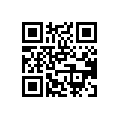Cook Children’s 2D Bar codes for Vaccines
 Cook Children’s Healthcare System is pushing the boundaries in vaccine management by utilizing two-dimensional (2D) bar codes for vaccines and streaming medical information directly into databases such as athenaClinicals, athenahealth’s Electronic Health Record (EHR) system, and HealthVault, Microsoft’s patient portal. Cook Children’s is also working together with vaccine vendors Sanofi Pasteur and Merck to include the 2D bar codes in their vaccine bottles. Cook Children’s, a not-for-profit pediatric health system in Fortworth, Texas, demonstrated this groundbreaking technology last October 15 to 18 at the National Conference by the American Academy of Pediatrics in Boston, Massachusetts.
Cook Children’s Healthcare System is pushing the boundaries in vaccine management by utilizing two-dimensional (2D) bar codes for vaccines and streaming medical information directly into databases such as athenaClinicals, athenahealth’s Electronic Health Record (EHR) system, and HealthVault, Microsoft’s patient portal. Cook Children’s is also working together with vaccine vendors Sanofi Pasteur and Merck to include the 2D bar codes in their vaccine bottles. Cook Children’s, a not-for-profit pediatric health system in Fortworth, Texas, demonstrated this groundbreaking technology last October 15 to 18 at the National Conference by the American Academy of Pediatrics in Boston, Massachusetts.
This past August, the United States Food and Drug Administration (FDA) had recently allowed using bar codes other than the traditional linear 1D (one-dimensional) bar codes on vaccine bottles. Since 2004, only linear bar codes were allowed on vaccine bottles, but their size made implementation difficult. The new 2D bar codes are only a quarter of an inch, so they easily fit on the vaccine bottles. With this new rule, doctors using athenaClinicals and HealthVault can scan the 2D bar code and have most of the information they need in their EHR.
2D bar codes, or Quick Response (QR) codes, revolutionize the way vaccines are managed. QR codes are part of the new matrix bar codes that consist of black and white cells in a rectangular pattern on a white background. They have a large storage capacity that can contain more information than traditional ones and have fast readability. The technology is simple and inexpensive but effective. Before, only the medication’s National Drug Code (NDC) could be embedded onto the vaccine bottle. With the new QR codes, not just the medication’s National Drug Code (NDC) can be stored, but other information as well, including expiration date, lot number and much more.
of black and white cells in a rectangular pattern on a white background. They have a large storage capacity that can contain more information than traditional ones and have fast readability. The technology is simple and inexpensive but effective. Before, only the medication’s National Drug Code (NDC) could be embedded onto the vaccine bottle. With the new QR codes, not just the medication’s National Drug Code (NDC) can be stored, but other information as well, including expiration date, lot number and much more.
This has a big impact in the way that vaccine is managed. Having QR codes helps confirm that the vaccine is the correct dosage for the right child and is being given at the appropriate time. The data is automatically uploaded to the EHR, automatically synching with the patient’s history, symptoms and diagnoses. An emergency file can be created, which can include vital data such as allergies, active medications, blood type, emergency contacts and other information that responders can refer to in an emergency. This improves healthcare management and tracking as well as eliminates clerical errors associated with manual logs.
With the proliferation of mobile phones, parents can also easily keep track of their children’s immunization records. Rather than relying on their own memory regarding when their kid was last vaccinated, they can simply scan the 2D bar code with their mobile phone using a free bar code scanning app. A mobile application can automatically add this information to a lifetime medical record for the child.
Once administered, a notice can be made automatically to the registry of the state. It also makes it easy to manage the supply of a practice, since it is easier to see when a reorder needs to be placed, which helps in lowering costs.
QR codes for vaccines enhance the quality of medical care for children, opening up a whole world of possibilities for usage. It is a low-cost solution that comes with a plethora of benefits.
Related articles:
RFID Tracking Prevents Patient Misidentification in Hospitals
RFID Tracking For High Value Medical Inventory
YouTube Video's that illustrate how to make labels and bar codes:
Create a QR Code for business cards
Make sheets of bar code labels
{jcomments on}
